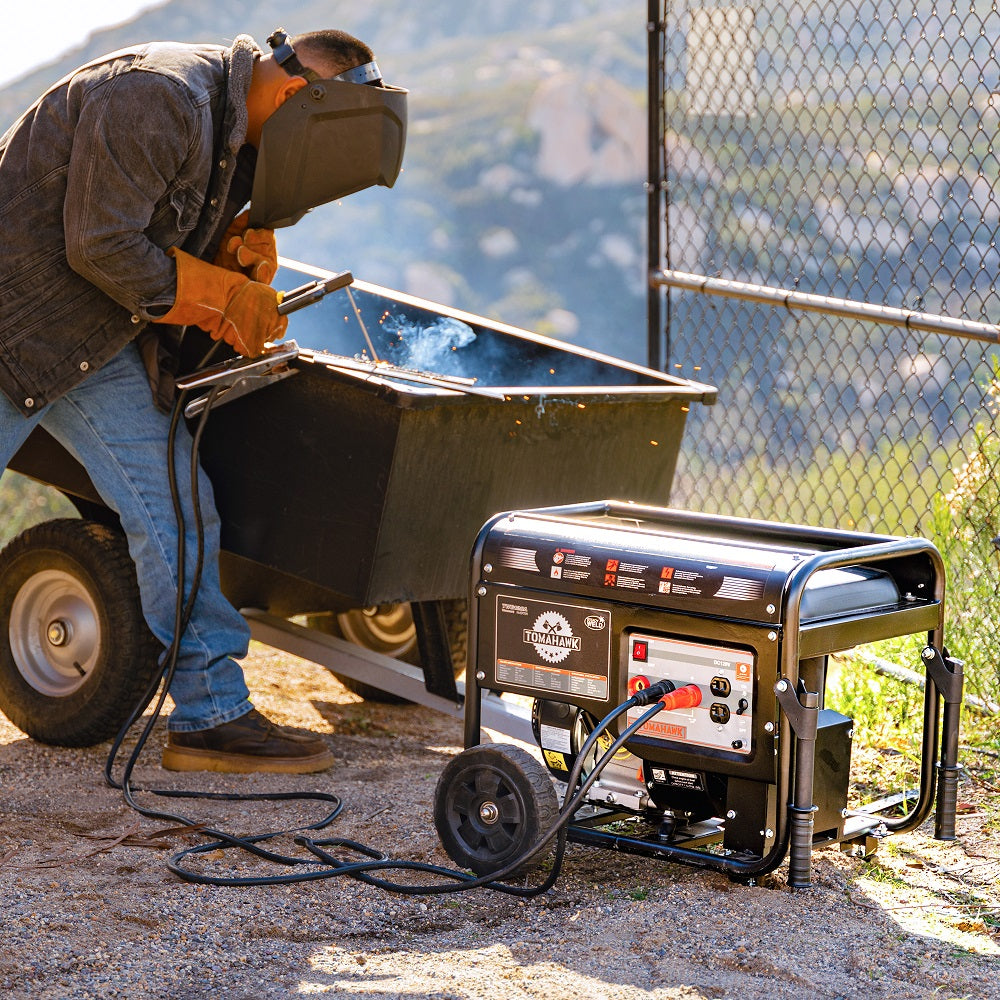If you're a DIY enthusiast or a hobbyist looking to delve into welding projects, setting up a welder generator workshop can open up a world of possibilities. A welder generator combines the functionalities of both a welding machine and a generator, providing you with a versatile and portable setup. In this blog post, we will explore the potential of a welder generator workshop, including various DIY projects and techniques that you can undertake.
-
Understanding Welder Generators: A welder generator is a compact and all-in-one machine that combines a welding power source with a generator for electrical power supply. These machines typically run on gasoline or diesel and are available in different power output capacities to suit various welding applications. Welder generators offer the convenience of having both welding and power generation capabilities in a single unit, making them ideal for DIY workshops or remote work locations.
-
DIY Projects with Welder Generators: a) Metal Fabrication: A welder generator workshop opens up opportunities for metal fabrication projects. You can create custom metal furniture, decorative items, or even structural components for home renovations. With the right welding techniques, you can join metal pieces together, cut shapes, and form various structures.
b) Automotive Repairs: If you enjoy working on cars or motorcycles, a welder generator workshop can be invaluable. You can undertake welding repairs on vehicle frames, exhaust systems, or fabricate custom parts. With the ability to generate power, you can also use electric tools for tasks like sanding, grinding, or painting.
c) Sculpture and Artwork: Welder generators provide the necessary tools to explore your creativity in sculpting and artwork. Using welding techniques such as MIG (Metal Inert Gas) or TIG (Tungsten Inert Gas), you can create unique metal sculptures or artistic pieces. The generator function ensures uninterrupted power supply for any additional tools or lighting needed.
d) Outdoor Projects: A welder generator's portability allows you to take your DIY projects outdoors. You can construct fences, gates, or even small buildings on remote properties. Additionally, you can tackle repairs or modifications to outdoor equipment, such as trailers, campers, or agricultural machinery.
- Welding Techniques for DIY Projects: To maximize the potential of your welder generator workshop, it's important to familiarize yourself with essential welding techniques. Here are a few commonly used techniques:
a) MIG Welding: MIG welding is a versatile and beginner-friendly technique. It involves feeding a continuous wire electrode through a welding gun, which melts into the base metal, creating a strong bond. MIG welding is commonly used for mild steel, stainless steel, and aluminum projects.
b) TIG Welding: TIG welding provides precise control and is suitable for welding a wide range of materials, including stainless steel, aluminum, and copper. It involves using a tungsten electrode to create an arc and manually adding filler material if necessary. TIG welding produces clean and aesthetically pleasing welds.
c) Stick Welding: Stick welding, also known as Shielded Metal Arc Welding (SMAW), is a versatile and accessible technique. It uses a consumable electrode coated with flux, which generates a protective shield as it melts, preventing contamination. Stick welding is suitable for various metals and can be used for both thin and thick materials.
- Safety Considerations: Working in a welder generator workshop requires strict adherence to safety guidelines. Here are a few essential safety considerations:
a) Personal Protective Equipment (PPE): Always wear appropriate PPE, including a welding helmet, gloves, welding apron, and safety glasses. Protective clothing and proper ventilation are also essential.
b) Fire Safety: Keep a fire extinguisher nearby and be mindful of potential fire hazards. Clear your work area of flammable materials and ensure proper grounding of the welding equipment.
c) Electrical Safety: Follow electrical safety protocols when using the generator function. Use grounded outlets, avoid overloading circuits, and be cautious when working with electrical tools.
d) Ventilation: Adequate ventilation is crucial when welding to minimize exposure to fumes and gases. Work in well-ventilated areas or consider using fume extraction systems or welding curtains.
Setting up a welder generator workshop opens up a world of possibilities for DIY projects and welding techniques. With a welder generator, you have the flexibility to undertake various metalworking projects, from metal fabrication to automotive repairs and artistic endeavors. By familiarizing yourself with different welding techniques and prioritizing safety, you can create impressive and functional pieces while enjoying the convenience and portability offered by a welder generator workshop. So, roll up your sleeves, ignite your creativity, and let your DIY projects come to life with the power of welding and generating in one workshop.










